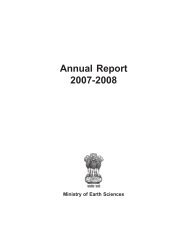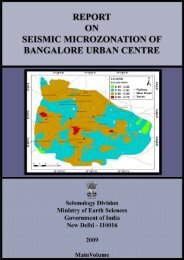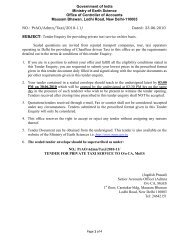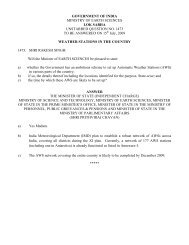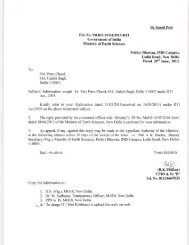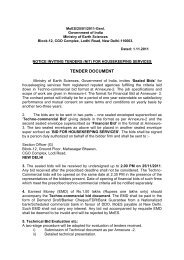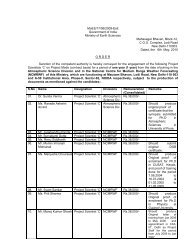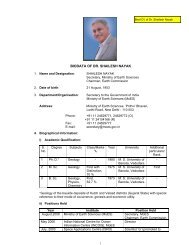Tsunami Report(Page 21-40)
Tsunami Report(Page 21-40)
Tsunami Report(Page 21-40)
Create successful ePaper yourself
Turn your PDF publications into a flip-book with our unique Google optimized e-Paper software.
5.3.3 South of ChennaiFIG 24.The preliminary results indicated that the southern Chennai upto Mahabalipuramalong east coast road has not been affected much due to steep land elevations andthe maximum inundation is seen up to 250 m. Presence of sand dunes andplantations at most of the locations played a vital role in protection of coastal villagesin this area. However in the Kalpakkam area where the Nuclear Power Plant issituated, the terrain is nearly flat and slightly elevated above mean sea level, greaterinundation is seen in this zone. The experience of coastal inundation between Pulicatand Kalpakkam due to this tsunami is that if CRZ is strictly implemented in this belt,there would not have been much loss to property and lives.A death toll of about 500 is reported from the coastal area of Cuddalore with aninundation of 1.5-2.0 kms at Devanampattinam coast mainly due to successive wavepropagations through the back waters. Severe damage is also noticed to fishingboats of this area. Further south of Cuddalore, the areas adjoined to the rivermouths of Vellar, Chinna Vaikal (Pichavaram) and Coleroon were severely damagedclaiming more than 1000 lives. The Parangipettai village (adjacent to Vellar river)witnessed maximum inundation up to 2.5 kms as the initial terrain slope (from coast)is very gentle and far reaching areas are low lying. The areas adjoined to Vellar inletand its back waters which were marked as a green region with dense plantationacted as a barricade to tsunami waves which resulted in reduction of wave energy,otherwise the intensity of the damage could have been much more severe. Thesatellite images before and after tsunami of this region clearly explain this bioshieldingeffect wherein the loss of vegetation after tsunami can be noticed (Fig.25).The Vellar inlet which is having two openings each of about 290 and 235 m width asobserved by a team of scientists from ICMAM-PD and IIT, Chennai on 24.12.04, aday before tsunami occurred was made opened to a great extent by tsunami wavesresulting the seawater ingression up to 5 km inside. The satellite imageries of thesemouth inlets before and after tsunami are presented in Figure 26. The flow of tidalwaters inside the estuary has inundated the paddy fields with seawater.35





